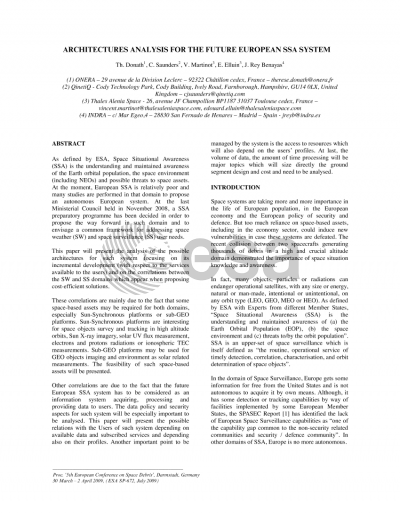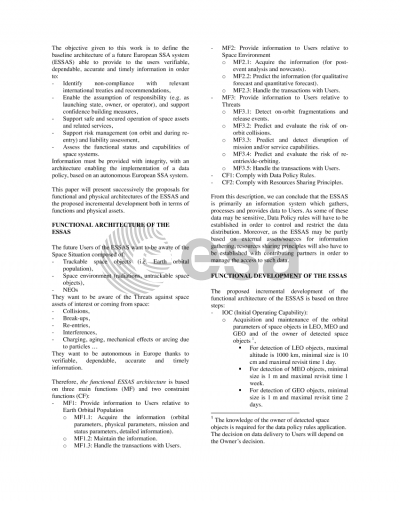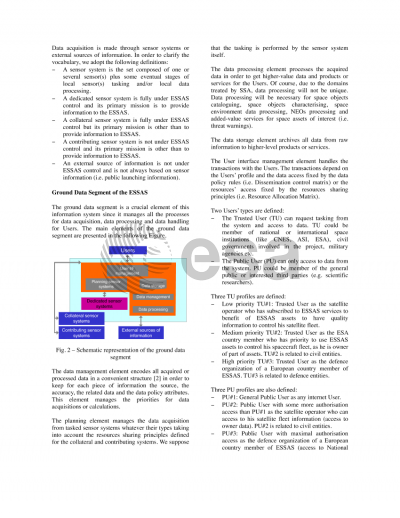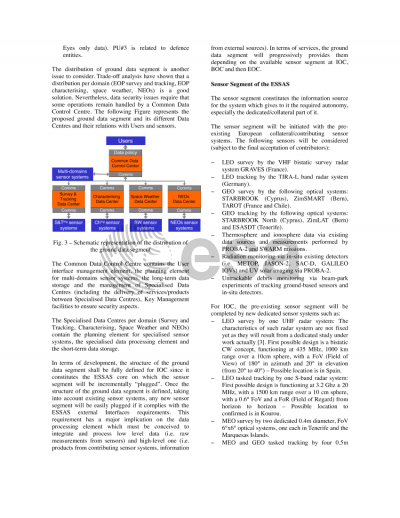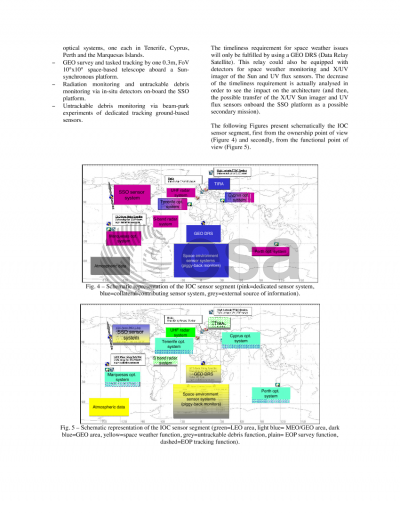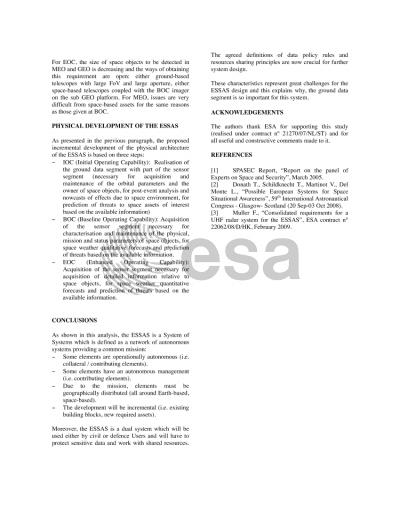Document details

Abstract
As defined by ESA, Space Situational Awareness (SSA) is the understanding and maintained awareness of the Earth orbital population, the space environment (including NEOs) and possible threats to space assets. At the moment, European SSA is relatively poor and many studies are performed in that domain to propose an autonomous European system. At the last Ministerial Council held in November 2008, a SSA preparatory programme has been decided in order to propose the way forward in such domain and to envisage a common framework for addressing space weather (SW) and space surveillance (SS) user needs.This paper will present the analysis of the possible architectures for such system focusing on its incremental development (with respect to the services available to the users) and on the correlations between the SW and SS domains which appear when proposing cost-efficient solutions.These correlations are mainly due to the fact that some space-based assets may be required for both domains, especially Sun-Synchronous platforms or sub-GEO platforms. Sun-Synchronous platforms are interesting for space objects survey and tracking in high altitude orbits, Sun X-ray imagery, solar UV flux measurement, electrons and protons radiations or ionospheric TEC measurements. Sub-GEO platforms may be used for GEO objects imaging and environment as solar related measurements. The feasibility of such space-based assets will be presented.Other correlations are due to the fact that the future European SSA system has to be considered as an information system acquiring, processing and providing data to users. The data policy and security aspects for such system will be especially important to be analysed. This paper will present the possible relations with the Users of such system depending on available data and subscribed services and depending also on their profiles. Another important point to be managed by the system is the access to resources which will also depend on the users' profiles. At last, the volume of data, the amount of time processing will be major topics which will size directly the ground segment design and cost and need to be analysed.
Preview
